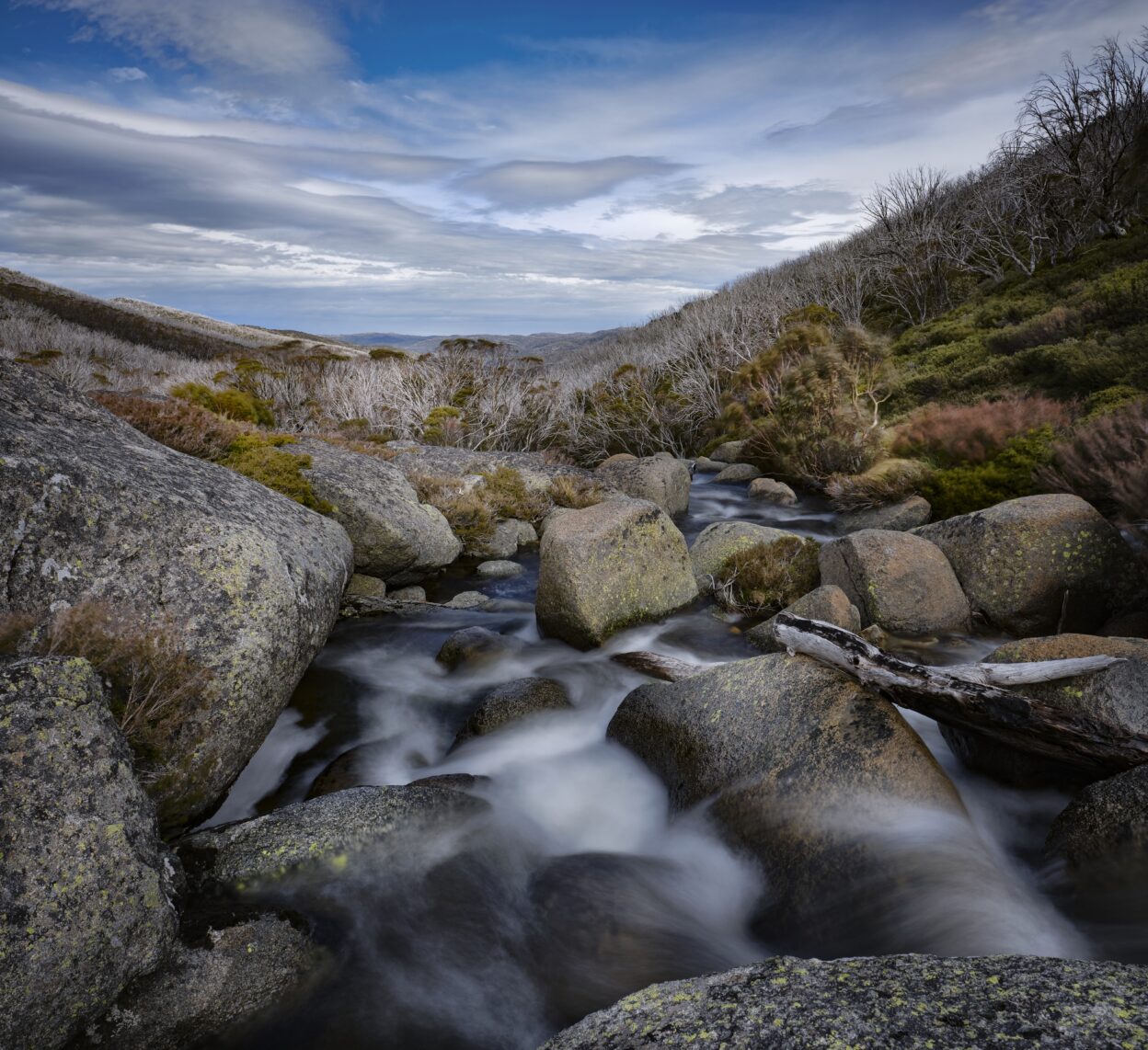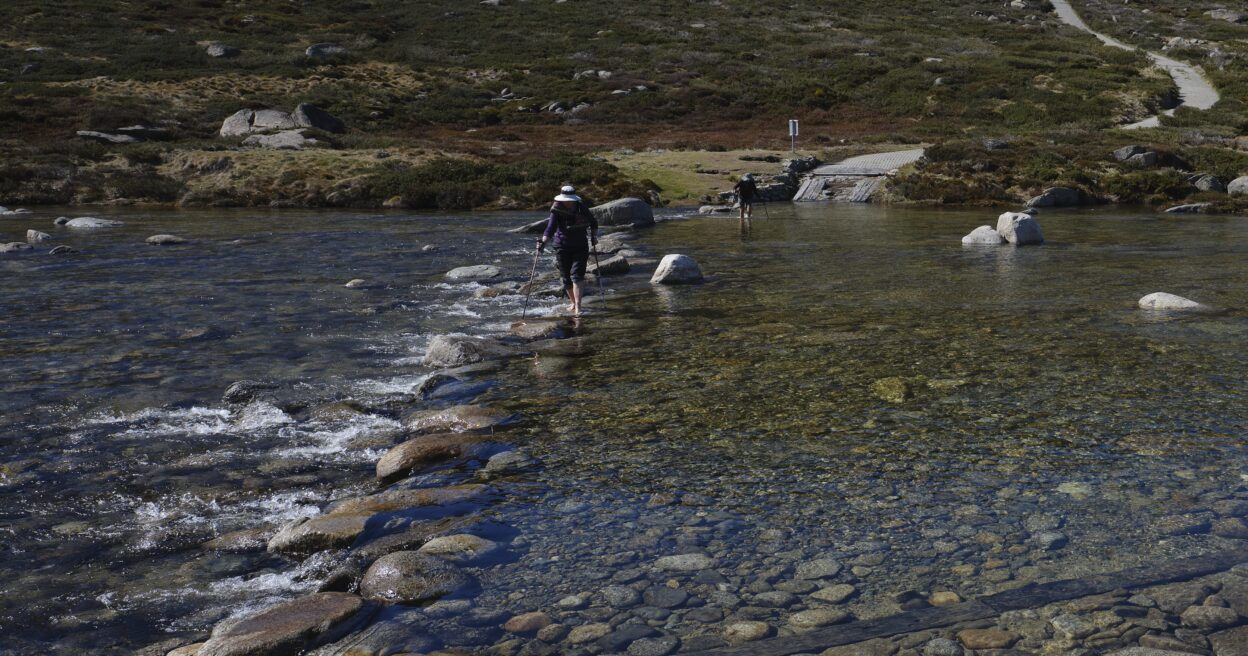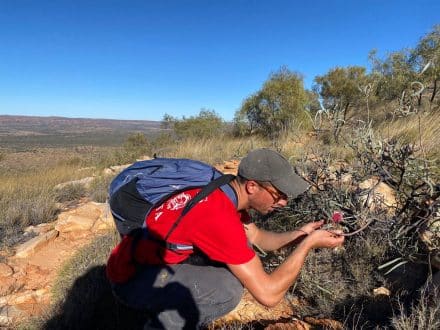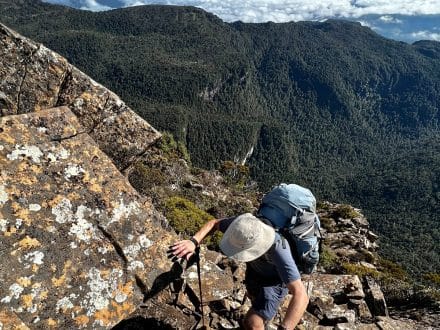Blue skies and white snow: Kosciuszko National Park serves up inimitable alpine views and offers much to discover.
The end of October offers some great advantages for walking in ‘the Snowies’. Depending on the snow, you may be rewarded with great vistas of snow-covered mountains. Usually, there is not too much that you need XC skis or snowshoes and if you can’t find a way around the snow, it’s generally packed down hard enough to make it easy to walk on. The weather is nice and cool for walking and the summer flies haven’t arrived yet. It was with this in mind that my fellow walkers and I set off for five days of hiking with a mixture of day and overnight walks.


Our first day walk was up to the Ramshead Range, with its impressive series of rocks sitting at just over 2,000 metres in Kosciuszko National Park amongst alpine grasslands. The park had a late snow season the day we were up there and the distinctive rocky granite tors were surrounded by fields of white. In the summer months, the cool crevices of these rocks become home to millions of bogong moths as they seek shelter from the summer heat. These soft, velvety insects were once so plentiful that First Nations people gathered from all over the region to feast on them. Unfortunately, their numbers have declined dramatically over the years and they are now listed as endangered. We took the opportunity on this walk to catch the chairlift up to the start of the metal walkway leading to the summit of Mount Kosciuszko, which on this day was covered in snow. We left the walkway after about an hour and headed over to Ramshead crossing; seeing large patches of snow and walking past little tarns that, although thawed, had small islands of ice in the middle. We spent some time enjoying the views on a perfect day of blue sky contrasting against the white snow.

Our second day walk was over to Blue Lake and as we parked our cars at Charlotte Pass, we knew we were in for a lot of snow walking as all the ranges were covered. After a small descent to the Snowy River, we were in for the unpleasant part of our walk: taking our boots off to cross the freezing river. The track now was only occasionally visible due to large snow drifts and a few times we stopped and checked our map.

Eventually, we reached the saddle above the lake and were rewarded with a magnificent view of Blue Lake, still frozen, with streaks of blue ice interspersed amongst white snow covering the lake. We found a small rocky outcrop where we ate our lunch and were amazed to watch skiers on the other side of the lake come down slopes that looked incredibly steep to us. We ventured to the edge of the lake and although it looked like you could walk on it, we didn’t risk it. To make a more circular trip, we returned via Hedley Tarn and down a delightful little valley following a small mountain stream.

To finish off our time in the mountains, we had a three-day hike planned from Guthega Power Station to Schlink’s Hut. The walk from the power station starts with a steady climb up a hill, but you are rewarded with morning tea at Horse Camp Hut. This enchanting little hut greets you through the trees as you wander up the path, with its bright red door inviting you in. It had been a few years since I last visited this hut and the Kosciuszko Huts Association (KHA) had done a marvellous job renovating it. We had lunch at Whites River Hut and as we were feeling pretty tired from the previous day, we decided to spend the night there and explored up on the rolling grounds in the afternoon along the Alpine Way track. The following day, we continued on to Schlink’s Hut and spent the afternoon exploring Dicky Cooper Creek as it meandered down the valleys dropping over a couple of beautiful waterfalls, but also a lot of dead snow gums from the 2003 bushfires. We enjoyed a lovely evening by the pot belly stove in the hut.


